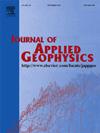利用增量半监督学习和基于无监督学习的标签生成技术识别盐丘
IF 2.2
3区 地球科学
Q2 GEOSCIENCES, MULTIDISCIPLINARY
引用次数: 0
摘要
盐穹是地震数据中独特的地质异常现象,对于精确定位油气储层和制定钻探路径至关重要。传统的地震属性或计算机视觉方法通常无法捕捉到盐穹的复杂细节,导致解释结果受到噪声的影响。虽然深度学习为智能三维盐穹解释提供了一种前景广阔的方法,但其有效性在很大程度上取决于是否有标记样本。为了促进精确判读,我们提出了一种创新的工作流程,将无监督标签生成组件与利用 U-Net 架构的增量半监督学习框架集成在一起。为了生成盐穹标签,我们优先将均方根振幅属性和方差属性作为基础数据。利用卷积自动编码器(CAE),我们在输入的均方根属性和输出的重构属性之间建立了一种关系。CAE 提取的中间特征通过主成分分析和 K-Means 聚类转换为盐边界特征。与此同时,我们采用 K-Means 聚类对 VA 进行聚类,以确定盐的内部特征。我们进一步提出了一种特征聚合方法,以整合盐边界特征和盐内部特征,从而生成盐穹顶标签。对于三维盐穹顶解释,我们首先使用无监督盐穹顶标签生成模块生成的标签预测相邻的测试数据集。然后将这些测试数据集的预测结果整合到训练数据集中,以提高 U-Net 的解释性能,使其成为盐穹解释的增量半监督学习方法。此外,我们还扩展了这项研究,利用最初为解释盐穹而开发的相同半监督模型参数,将迁移学习技术用于识别土墩shoals。我们利用荷兰 F3 区块的盐穹窿数据集和华北区块的土墩shoals数据集对这一方法进行了验证。结果表明,这种创新方法只需要从无监督方法中提取极少量的标签,就能精确解释三维地震数据中的盐穹隆。此外,从神经网络中学习到的盐穹隆低层特征可无缝转移到土墩shoal识别中。这种自动化方法大大简化了解释过程,减少了传统储层分析所需的时间和资源。本文章由计算机程序翻译,如有差异,请以英文原文为准。
Salt dome identification using incremental semi-supervised learning and unsupervised learning-based label generation
Salt domes represent distinctive geological anomalies in seismic data, crucial for pinpointing hydrocarbon reservoirs and strategizing drilling paths. Conventional seismic attributes or computer vision methods usually fail to capture the intricate details of salt domes, resulting in interpretation results marred by noise. While deep learning presents a promising approach for intelligent 3D salt dome interpretation, its effectiveness is heavily dependent on the availability of labeled samples. To facilitate accurate interpretation, we propose an innovative workflow that integrates an unsupervised label generation component with an incremental semi-supervised learning framework utilizing the U-Net architecture. To generate salt dome labels, we prioritize both the root mean square (RMS) amplitude attribute and variance attribute (VA) as foundational data. Utilizing convolutional autoencoders (CAE), we establish a relationship between the input RMS attribute and the output reconstructed attribute. The intermediate features extracted by CAE are transformed into the salt boundary feature via principal component analysis and K-Means clustering. Concurrently, we employ K-Means clustering on VA to ascertain the salt internal feature. We further propose a feature aggregation method to consolidate the salt boundary feature and the salt internal feature for label generation of the salt dome. For 3D salt dome interpretation, we begin by predicting adjacent test datasets using labels generated by the unsupervised salt dome label generation module. The prediction results of these test datasets are then integrated into the training datasets to enhance the interpretation performance of U-Net, steering it towards an incremental semi-supervised learning method for salt dome interpretation. Additionally, we extend this research by applying transfer learning techniques for identifying mound-shoals using the same semi-supervised model parameters initially developed for interpreting salt domes. This method is validated using datasets from the Netherlands F3 block for salt domes and the North China block for mound-shoals. The results demonstrate that this innovative process only requires a minimal number of labels from unsupervised methods to precisely interpret salt domes across 3D seismic data. Furthermore, the low-level features of salt domes learned from neural network can be seamlessly transferred to mound-shoal identification. This automated approach significantly streamlines the interpretation process, reducing the time and resources traditionally necessary for reservoir analysis.
求助全文
通过发布文献求助,成功后即可免费获取论文全文。
去求助
来源期刊

Journal of Applied Geophysics
地学-地球科学综合
CiteScore
3.60
自引率
10.00%
发文量
274
审稿时长
4 months
期刊介绍:
The Journal of Applied Geophysics with its key objective of responding to pertinent and timely needs, places particular emphasis on methodological developments and innovative applications of geophysical techniques for addressing environmental, engineering, and hydrological problems. Related topical research in exploration geophysics and in soil and rock physics is also covered by the Journal of Applied Geophysics.
 求助内容:
求助内容: 应助结果提醒方式:
应助结果提醒方式:


